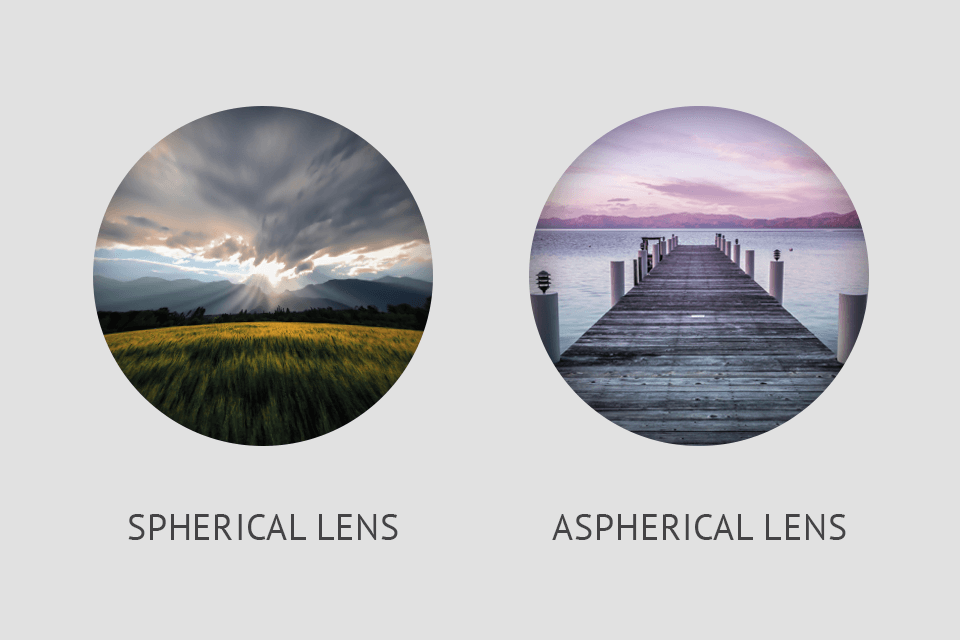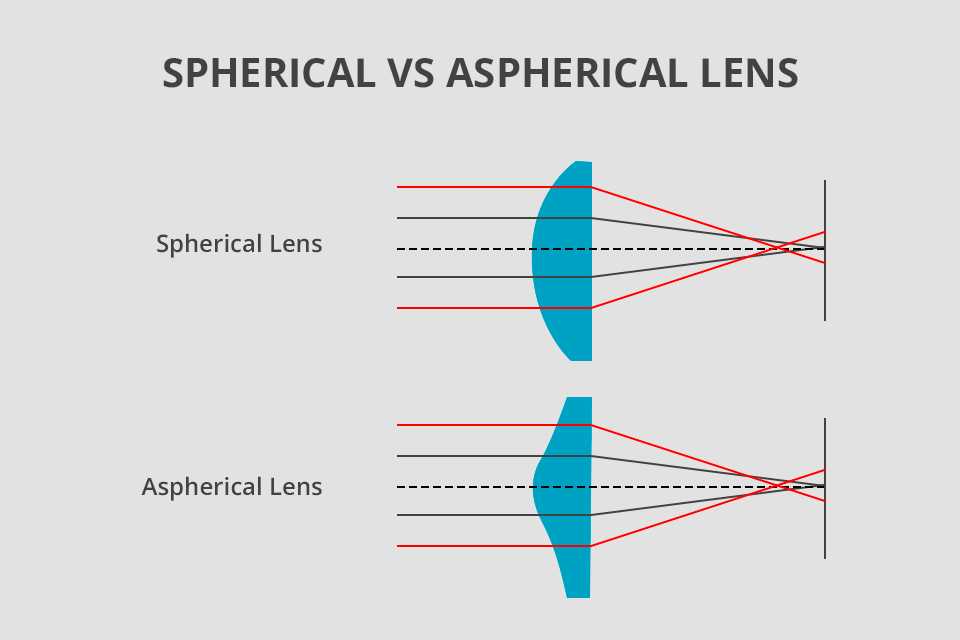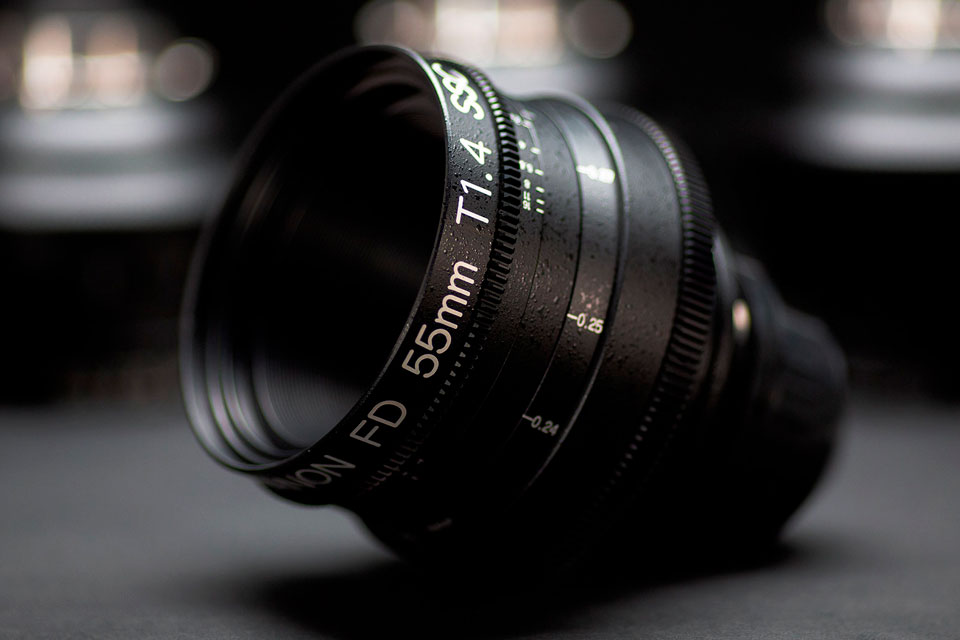
The main feature of an aspherical lens is its non-spherical surface, in other words, aspherical. At the edges of the lens, you will usually notice counter-curves directing the light beam that hits it to the same focal point as the beam that hits the center of the lens.
This complex-surface lens often changes the curve in some areas. This helps to get rid of spherical and chromatic aberrations.

The surface of spherical lenses resembles parts of a sphere or cylinder, as they have an identical curve across the entire body. If you create a line that repeats the curve, you’ll receive a circle. Due to their minimalistic design, spherical lenses are typically very cheap to manufacture.
The surface of an aspheric model could never naturally fit a sphere or a cylinder. Its curve isn’t the same in different parts of the surface, as the lens’ shape serves to improve light redirection and focusing. Such a design is essential for dealing with all possible aberrations.
When picking up camera lens, give preference to aspherical models if your goal is to minimize the spherical aberrations in your photos.
Recommended aspherical lens models: Rokinon AE35M-C 35mm F1.4, Canon TS-E 17mm f/4L UD, Leica 50mm f/1.4 Summilux-M
The key to understanding the asph lens meaning is that it needs to have a non-spherical surface shape to perform its functions properly. The biggest benefit of using this lens type is the capability to deal with spherical aberrations.
Aspherical elements let optical designers fix aberrations by employing a smaller number of components compared to classic spherical optics since a single aspherical surface offers superior aberration correction than several spherical ones.

Due to that fact, a smaller number of aspheric lenses can replace a bunch of spherical models to deliver similar or even superior results while minimizing the system size, streamlining the assembly procedure, and offering a more cost-efficient manufacturing process while drastically enhancing the photo quality.
That said, aspherical lenses aren’t immune to flaws. For instance, such options, like Leica lenses, are usually harder to manufacture using traditional fabrication techniques like grinding and polishing since aspherical components are more refined and complex compared to spherical ones. That’s the main reason why aspheric lenses aren’t as widely-spread as they should be.

Theoretically, when light beams pass through the camera lens, they converge in one place, resulting in a sharp and crisp focus. However, in practice, most spherical lenses cannot boast of this.
Most often, light beams passing through a spherical lens are focused in different places. This results in blurring your shots and degrading their quality. This phenomenon is called spherical aberration.
There are several ways to avoid this trouble. You can combine concave and convex lenses, or install an aspherical lens.
An aspherical camera lens is a lens whose rear element is curved outward, thereby achieving a better direction of light rays to one focal point. Its counter curves on the surface are a great solution to combat spherical aberration. Opting for this lens means you don’t have to use photo editing software to enjoy super-sharp shots.
The biggest advantage of using an aspheric camera lens is the ability to deal with spherical aberrations, which is an optical flaw caused by incident light focusing at different points when forming a photo and resulting in blurriness.
The biggest flaw of aspheric lenses is their manufacturing cost which is heavily inflated because of all the effort that goes into it. Such lenses are also often supplied with reflective coatings, which isn’t the case with regular models, like Sigma lenses. Additionally, they demand precise measurements of your pupillary distance.
Spherical models offer a surface that has an identical curve from top to bottom and side to side. Meanwhile, aspheric models have a significantly more complex surface, as the curve is altered in specific parts to eliminate spherical aberrations.